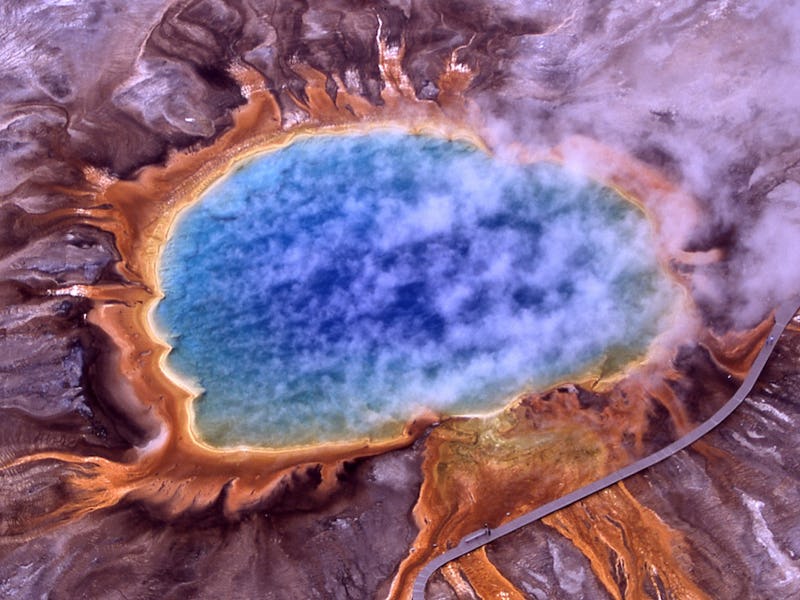The Chances Yellowstone's Supervolcano Will Erupt in Your Lifetime Are Slim
Don't panic.

A colossal, active supervolcano lies beneath the surface of Yellowstone National Park, fueling the piping hot springs and geysers that attract some 3.8 million visitors each year. Potential guests may think twice about their next visit, though, especially after reading recent headlines suggesting that the supervolcano may blow at any minute. Fortunately, such claims are far from the truth.
In their study, the team examined minerals left behind in the fossilized ash from the supervolcano’s last mega-eruption, which happened 631,000 years ago. At that time, it spat out 240 cubic miles worth of rock and ash and created what’s now known as the Yellowstone caldera and the Lava Creek Tuff, which is where the team collected samples for their analysis. The two eruptions before that, which took place sometime in the last 2 million years, each created the two other calderas found in the park.
Movement of new magma into the volcano system is thought to have triggered the last eruption in a matter of decades.
Those alarming stories are based on the work that researchers at Arizona State University presented at a volcanology conference in Portland, Oregon, in August. While they didn’t find that Yellowstone’s supervolcano was going to erupt anytime soon, they did find that the chain of events that triggers an eruption moves along much more quickly than was once believed.
“It’s shocking how little time is required to take a volcanic system from being quiet and sitting there to the edge of an eruption,” said Hannah Shamloo, a graduate student at Arizona State University and co-author on the study, in an interview with the New York Times on Tuesday.
The history of Yellowstone's eruptions and the calderas that they formed.
The crystals they dug up were a record of the timing of those previous eruptions and the geological events — like the movement of magma into the volcano — that led up to them. Scientists used to think that once one of these events happened, the effects would take several millennia to manifest into an actual eruption. But the crystals, which chronicled changes in temperature, pressure, and water in the magma in which they formed in their different layers, suggested that those changes can happen in a matter of decades. In the case of the supervolcano’s last explosion, they note, the analysis shows the eruption process was triggered when new magma moved into the volcano just decades before.
But everything is relative, and what seems rapid in geologic timescales is painfully slow for humans — likely too slow for any living human to really be concerned about. Even if Yellowstone’s supervolcano gets a sudden injection of new magma the way it did 630,000 years ago, we would, according to this study, have several decades to prepare. And, because the volcano is one of the most closely monitored volcanoes in the world, we would definitely know if that happened.
According to scientists at the United States Geological Survey, Yellowstone’s history puts the yearly probability of another caldera-forming eruption as one in 730,000, or 0.00014 percent — odds that are, they note, roughly similar to that of a large (1 kilometer) asteroid hitting the Earth. The odds of a U.S. nuclear war with North Korea, according to the August estimate from retired Navy Adm. James Stavridis, meanwhile, are 10 percent.